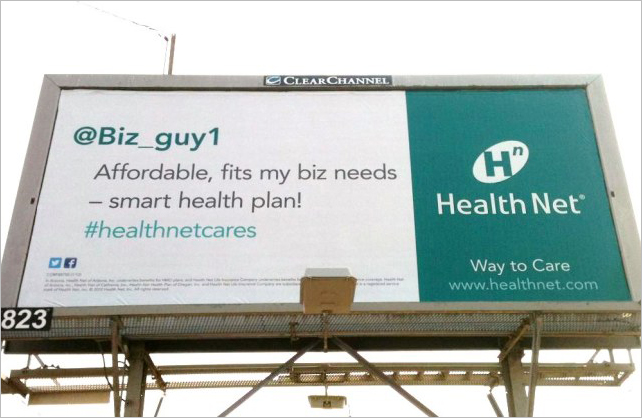- Dec 12, 2013
- By Alicia Bertsche
- In Social Media and Digital Marketing, Marketing Strategy and Planning
3 Healthcare Marketing Mistakes You Don't Want to Make

 Times are tough in the healthcare industry. Turmoil surrounds the Affordable Care Act. Budgets are being slashed. Staff is getting cut, and it seems like every other week there's more merging and consolidation.
Times are tough in the healthcare industry. Turmoil surrounds the Affordable Care Act. Budgets are being slashed. Staff is getting cut, and it seems like every other week there's more merging and consolidation.
As marketers in the healthcare world, we know you're trying to do the best you can with what you've got, and we want you to succeed. So we've gathered three major healthcare marketing mistakes that others have made so that you can avoid falling in their footsteps!
1. Social Media Misfires
Facebook advertising is a great way to spread the word about your practice or company. It’s relatively inexpensive— Facebook allows you to set your daily budget as high or as low as you want— and thanks to Facebook’s advanced insights into its users, you can hyper-target your ads by age group, gender, interest, and more.
But despite all that, it’s possible to screw it up. How? By getting your messaging wrong.
Exhibit A:
 Image via epicmarketingfails blogspot
Image via epicmarketingfails blogspot
It’s clear that Villanova Dental Studio wants to gain some traction on Facebook, but they miss the mark by disconnecting the messaging of their ad from what they’re all about. They might get “likes” from Ottawa Senators fans, but they haven’t really done anything to spread awareness about themselves or differentiate their brand.
Villanova could have kept the hockey theme and targeted Senators fans with a more brand-aware message— a picture of a hockey player missing a tooth with the text, “Hockey accident? We can help.”
2. Billboard Bummers
Billboards can be a great way to draw attention to your practice or company— if used properly as just one part of your healthcare marketing strategy. For example, lots of hospitals have run billboards that list the current wait times at their emergency rooms to highlight the notion that they provide speedy service:

Simple, yet very effective. Adding the text code in to allow people to check current wait times when they’re not passing a billboard ties the message into a larger marketing campaign.
But billboards can go bad very easily.
Many medical practices tend to produce billboards filled with too much text, that focus on the wrong aspect of the message, or don’t click with the audience. But the most dangerous billboard practice is one that that your group hopefully isn’t using: dishonesty.
Last year, HealthNet, one of the country’s largest publicly traded managed care companies, got caught falsifying positive tweets about themselves that were posted as billboard ads:

Biz_guy1? A locked account that has only 1 follower and most certainly did not post this tweet. Here’s Health Net’s explanation:
Hi – thanks for visiting us.
You might have seen our ads and have some questions. Our campaign features real testimonials from Health Net members. We thought this would be a fun way to show what our members think of us. While the execution may not have been perfect, it was always well intentioned.
Well-intentioned though it may have been, it missed the mark and may have even damaged the brand’s reputation. Testimonials should never be falsified – on a billboard or otherwise. In today’s connected world, it’s easy for consumers to sniff out false advertising and check up on it.
Don’t put yourself in that position.
3. Digital Marketing Missteps
In days gone by, doctors relied on word-of-mouth, the yellow pages, and newspaper ads to bring more patients into their practices. And it worked.
But in the digital world, it’s just not enough. Potential customers go to Google to find the medical services and healthcare information that they’re looking for. In fact, as we mentioned a few posts ago, 80% of people go to internet search for medical answers.
What this means in terms of hospital or other healthcare marketing is that you have to be visible online, answering the questions that potential customers are asking. Unfortunately, healthcare organizations tend to neglect this, thinking that all they need is a website that lists their services, location, and phone number.
Now’s the time to make sure you’ve brought your practice into the 21st century and the digital era.
- Get your website updated and optimized for the search terms patients use when they’re looking for services you offer. If you don’t have a website, get one.
- Make sure you’re including truthful testimonials that speak to your quality of care.
- Get a Google+ page, link it to your website, and update it regularly to increase your relevance in local search.
- Start a blog and talk about common questions patients often have when they come to see you (in keeping with HIPAA requirements, of course).
- Claim your hospital or practice’s name on the major social sites and use them.
If you're deliberate with your messaging and can avoid making these marketing mistakes, your organization will rise above the chatter of today's healthcare climate and be better positioned for future success.




